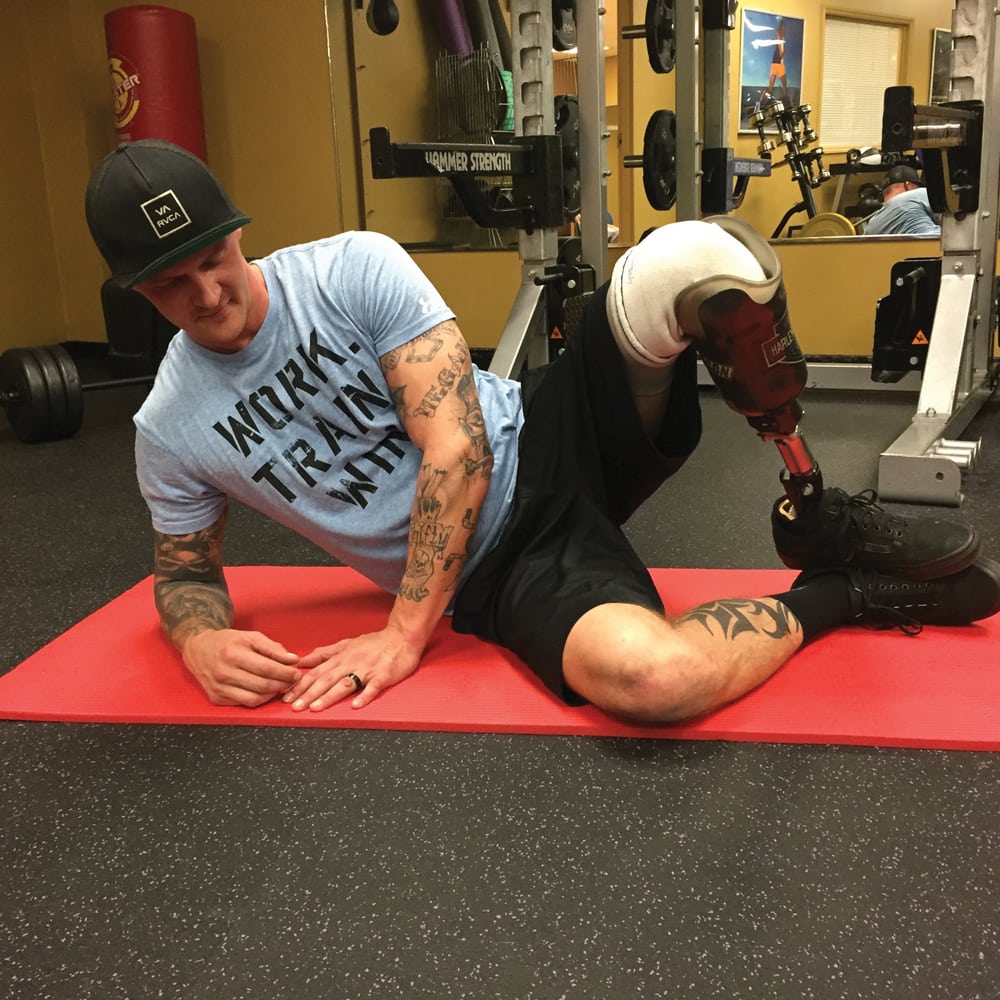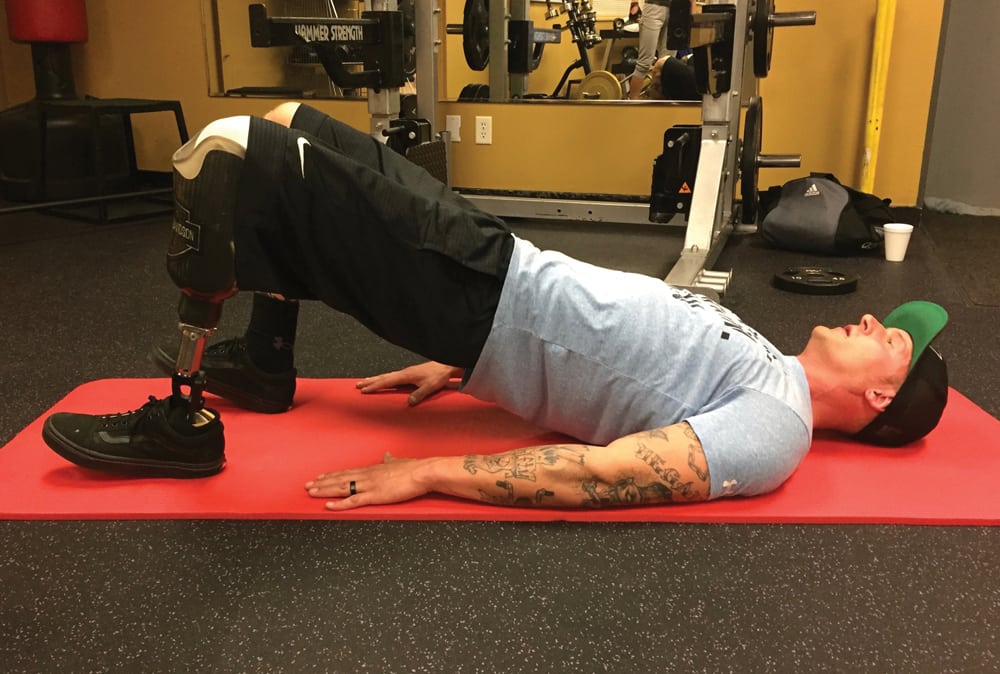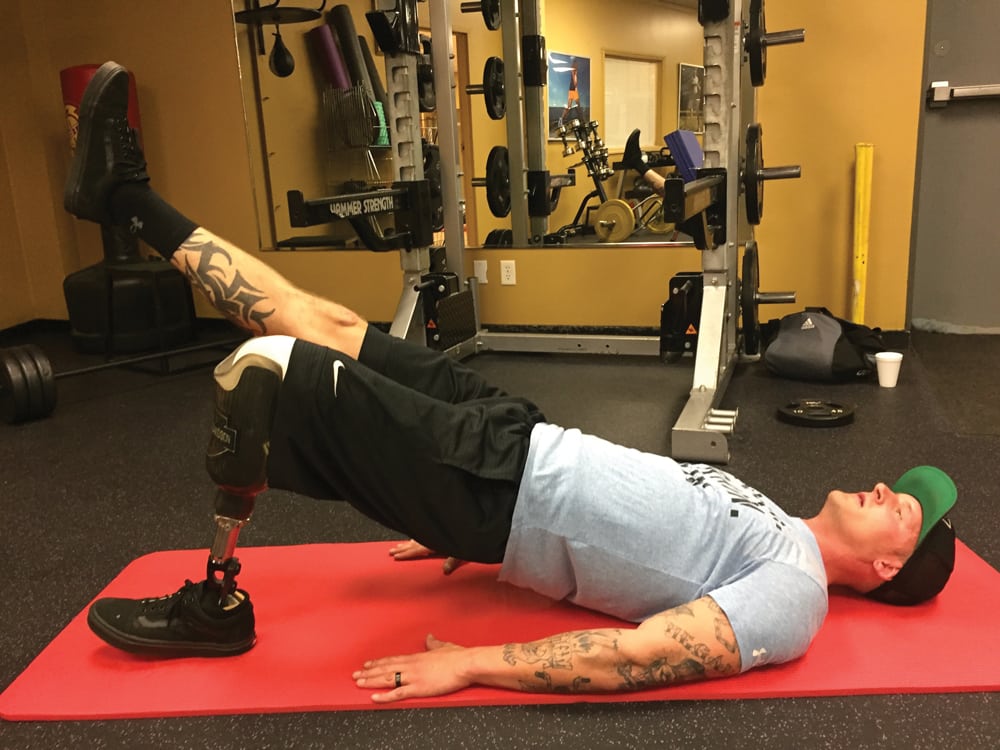By John Pope
The muscles responsible for stability and controlling movement are the ones that are most often neglected. While much attention is paid to the muscles we see in the mirror—the chest, arms, and abs—underdeveloped posterior musculature creates imbalance that can lead to poor body mechanics, reduced range of motion, neck and back pain, joint instability, and injury.
The posterior chain is a complex series of musculature along the back of your body that runs from your spine to your heels. The glutes (butt muscles) and hamstrings—two of the most important muscles for movement—work together like a thick rubber band storing and releasing energy to produce force and movement. When they are not working together, movement integrity is compromised.
The glutes are primarily responsible for hip extension and pelvic stability. Without hip extension, we would not be able to stand upright or propel ourselves forward during gait. Without pelvic stability, we would lack balance and control of our center of mass. Weak glutes can contribute to many issues such as tight hips and lower-back pain. When we sit for long periods of time or hold poor posture, these muscles disengage—a condition that Stuart McGill, PhD, refers to as “gluteal amnesia.”
So how do we turn these muscles back on?
The smaller muscles of the gluteal group control the femur at the hip joint. Exercises that focus on these smaller muscles can jump-start the nervous system and prime the glutes for activity.
Although these exercises can be done at home with no equipment except an optional resistance band, you may need to slightly alter them for your amputation type and level.
John Pope, CP, CSCS, MPO, is a health and performance specialist. He has master’s degrees in kinesiology and human biomechanics and in prosthetics and orthotics.
This article is for informational purposes only. Before beginning an exercise regimen, consult a qualified healthcare professional.

The side-lying clam is performed by lying on your side with knees bent and stacked. To perform the exercise, raise the top knee toward the ceiling then lower it back to the starting position. Perform two sets of 12-15 repetitions. To make this movement harder, add a resistance band around your knees.

For a more difficult exercise progression, try the fire hydrant. Start on your hands and knees with your back and neck straight, hands directly under your shoulders and knees directly under your hips. Lift your leg out to the side until it is parallel with the ground, keeping your knee and ankle bent at a 90-degree angle. Hold, and then return to starting position. Perform three sets of eight repetitions on each side.

The lying hip extension (hip bridge) is a great entry-level exercise to isolate the gluteal musculature. Start by lying face up, hands extended at your side, knees bent, and feet flat on the ground. Brace your stomach, push through your heels to raise your hips toward the ceiling. Focus on squeezing the butt muscles and keeping your spine straight without letting your lower back round.

The single-legged hip bridge will make the exercise more difficult by adding a rotational stability component. Start by lying face up, hands extended at your side, with one knee bent and your foot flat on the ground, while keeping your other leg straight. Brace your stomach, push through your heel on the ground to raise your hips toward the ceiling. Keep the extended leg as straight as possible and in line with your spine. Focus on squeezing your butt muscles and keeping your spine straight without letting your lower back round or your pelvis tilt.



